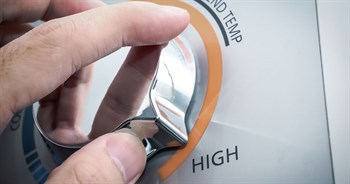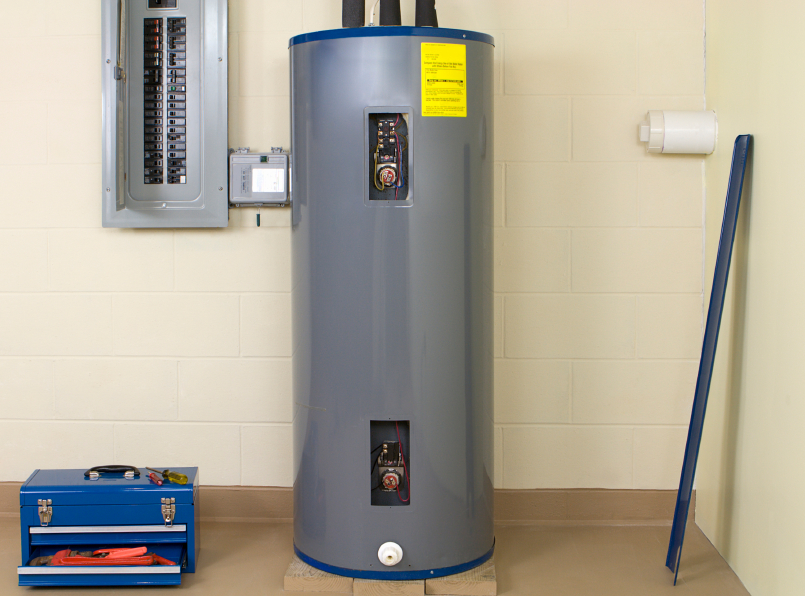
How To Flush a Hot Water Heater & How Often You Should Do It

Your water heater is one of the most important plumbing fixtures in your home. Responsible for heating your home's water supply, homeowners must take care of these systems to prevent water heater failure. One of the best ways to provide preventative maintenance for your water heater is by performing a system flush periodically. While this is something that's performed by your trusted plumbing professional during annual water heater maintenance, it's recommended that homeowners flush their systems periodically on their own to keep their units in the best condition possible.
How To Flush Your Hot Water Heater the Right Way

Before Getting Started
Before draining the tank, it's essential to know how to power down your water heater unit. Your unit may even have a vacation setting available — if that's the case, this can be used during the flushing process. If you have a gas water heater, find out whether you need to ignite the pilot light manually. This information can typically be found in the owner's manual that came with your system. If you don't have the manual handy, refer to the water heater's label to identify the brand name and model number to find available resources online. Some water heaters may even have their pilot light instructions printed on the tank itself.
Steps to Flushing Your Water Heater
Once you've successfully powered down your system, it's time to start flushing the unit. Here's how you do it:
- Step 1: Shut down the cold water supply to your water heater. Older homes may require you to shut off the water where the main water supply line enters the house. If you have a water softener between your mainline and the water, be sure to shut off the valve there as well.
- Step 2: Turn down the water heater thermostat and place the unit either on vacation mode or turn it off completely. This is important to prevent having the unit turn on when all the water has been drained out of the system. Mainly for gas water heaters, turning on the unit without water can cause damage to the tank. Be sure that if you do have a gas water heater, you shut the gas supply valve.
- Step 3: Using a garden hose, connect to the tank's drain valve near the system's bottom. Allow the other end of the garden hose to lead either to a drain or somewhere outside the home, far enough away from your foundation so no water will flood your crawl space.
- Step 4: Turn on all the hot water faucets in your home to drain the water from the tank faster.
- Step 5: Open the drain valve and allow the tank to drain. Watch the water as it comes out to see how much sediment is coming out. If no water is coming out, you could have a sediment clog on your hands, which may require you to open the temperature-pressure release to allow the pressure to escape and the water to drain. Then, you'll need to use a wet/dry vacuum to suck out the blockage.
- Step 6: Once the tank is drained, it's time to turn on the cold water again to rinse out any remaining sediment. Allow the water to run for a few minutes and check the end of the hose to see when the water has run clear, shutting it off once it does.
- Step 7: Remove the hose from the drain valve and use the wet/dry vacuum to remove any remaining sediment from the opening. When the drain valve is closed, turn the cold water supply back on.
- Step 8: Leave your hot water faucets open until water starts to flow again so you can prevent trapping air inside your plumbing system. It's okay if some rust or sediment comes out at first — this should go away after a few minutes.
- Step 9: Reset your water heater thermostat to your standard settings. If you have a gas water heater, be sure to open the gas valve and reignite the pilot light according to your manual's instructions.
When To Flush Your Hot Water Heater
Water heaters should be flushed during your annual water heater maintenance appointment. However, homeowners can further extend their systems' life span by flushing their water heaters periodically throughout the year. In most cases, homeowners should aim to flush their systems at least once every six months. However, if you have extremely hard water (water rich in minerals and sediment), you may need to do this more often. In some instances, you may need to flush your system as often as every few months if hard water is a serious problem.
When To Contact a Plumber for Water Heater Services
If you're not confident enough to perform a water heater flush on your own or you discovered something alarming when doing a regular flush, trust the team at David Gray to resolve the problem. Our plumbing experts have more than 40 years of experience serving Florida families. We're capable of servicing all types of water heaters. We provide water heater maintenance services to help extend your system life span, increase energy efficiency, and reduce repair requests.
Have a water heater emergency on your hands? Call David Gray at (904) 724-7211 to schedule water heater maintenance or emergency water heater repair today!

